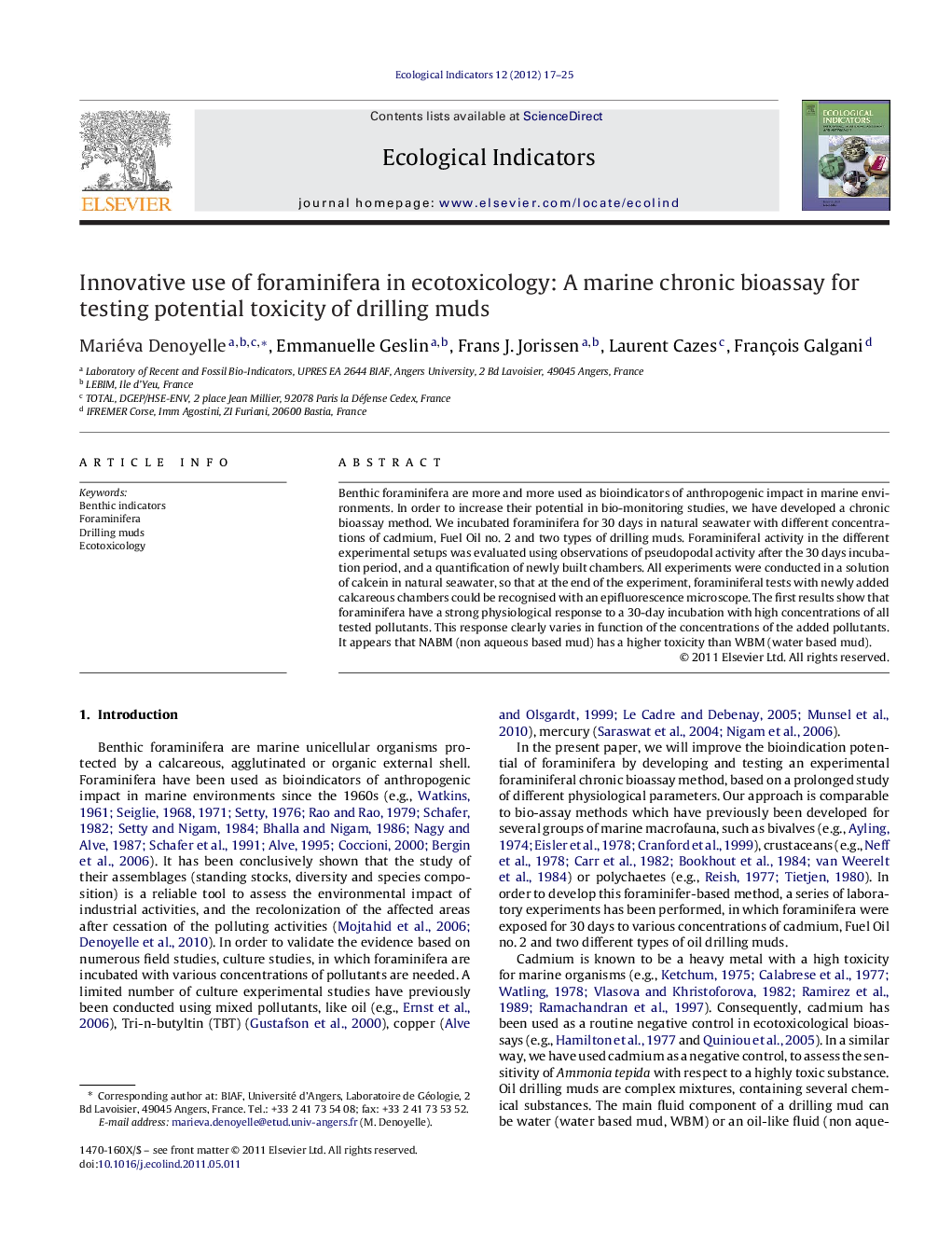| Article ID | Journal | Published Year | Pages | File Type |
|---|---|---|---|---|
| 4373832 | Ecological Indicators | 2012 | 9 Pages |
Benthic foraminifera are more and more used as bioindicators of anthropogenic impact in marine environments. In order to increase their potential in bio-monitoring studies, we have developed a chronic bioassay method. We incubated foraminifera for 30 days in natural seawater with different concentrations of cadmium, Fuel Oil no. 2 and two types of drilling muds. Foraminiferal activity in the different experimental setups was evaluated using observations of pseudopodal activity after the 30 days incubation period, and a quantification of newly built chambers. All experiments were conducted in a solution of calcein in natural seawater, so that at the end of the experiment, foraminiferal tests with newly added calcareous chambers could be recognised with an epifluorescence microscope. The first results show that foraminifera have a strong physiological response to a 30-day incubation with high concentrations of all tested pollutants. This response clearly varies in function of the concentrations of the added pollutants. It appears that NABM (non aqueous based mud) has a higher toxicity than WBM (water based mud).
► Foraminifera are sensitive to long term incubation (30 days) with each of the four tested toxic substances and mixtures. ► For all tested pollutants, foraminifera appear to be less sensitive than most other benthic organisms. ► The foraminiferal responses can be detected by different physiological parameters (pseudopodal activity and chamber addition). ► The tests performed with foraminifera confirm that NABM is more toxic than WBM.
